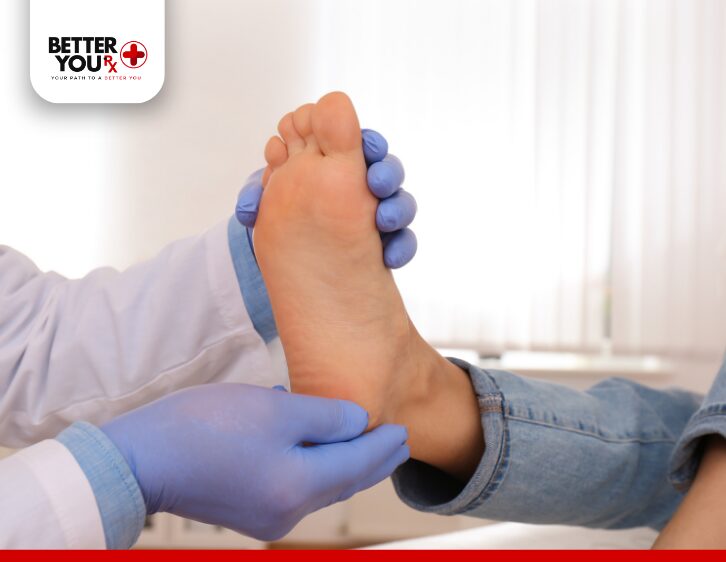How to Handle Low Blood Sugar (Hypoglycemia) in Diabetics
For individuals with diabetes, maintaining stable blood sugar levels is essential for good health. While high blood sugar levels (hyperglycemia) are often a focus of diabetes management, low blood sugar (hypoglycemia) can also be a serious and dangerous condition. Hypoglycemia happens when blood sugar levels fall below 70 mg/dL, which is considered too low. If left untreated, it can lead to confusion, fainting, seizures, and even life-threatening complications. Therefore, understanding how to handle low blood sugar is crucial for those living with diabetes.
This article will explore the causes of hypoglycemia, the symptoms to watch for, and practical steps to prevent and manage low blood sugar in diabetics. Additionally, it will discuss the role of healthcare providers in managing hypoglycemia and offer tips for creating a comprehensive diabetes care plan.
What Causes Hypoglycemia?
Hypoglycemia can occur for a variety of reasons, especially in individuals with diabetes who use insulin or other medications that increase insulin production. Some common causes of low blood sugar include:
- Too much insulin or diabetes medication: Taking more insulin than needed can cause blood sugar levels to drop too low.
- Delayed or skipped meals: Missing a meal or not eating enough can result in a lack of glucose for the body, leading to hypoglycemia.
- Intense physical activity: Physical exertion, especially without adjusting food intake or medication, can lead to low blood sugar levels.
- Alcohol consumption: Drinking alcohol can impair the liver’s ability to release glucose into the bloodstream, causing hypoglycemia.
- Certain medical conditions: Some health conditions, such as kidney disease or hormonal disorders, can interfere with blood sugar regulation.
Recognizing the Symptoms of Hypoglycemia

Hypoglycemia symptoms can vary from person to person, but common signs include:
- Shakiness or trembling
- Sweating or cold, clammy skin
- Dizziness or lightheadedness
- Fatigue or weakness
- Irritability or anxiety
- Confusion or difficulty concentrating
- Rapid heartbeat
- Blurred vision
- Headaches
If blood sugar levels continue to drop, more severe symptoms can occur, including:
- Loss of coordination
- Unconsciousness
- Seizures
It’s essential for individuals with diabetes to recognize these symptoms early and take action to raise their blood sugar levels before they worsen.
How to Treat Low Blood Sugar (Hypoglycemia)

If you experience symptoms of hypoglycemia, it’s crucial to address it immediately to avoid more severe complications. The general approach for treating low blood sugar is to consume fast-acting carbohydrates that can raise blood sugar levels quickly.
Here are the steps to take:
Step 1: Check Your Blood Sugar
If possible, use a blood glucose meter to confirm that your blood sugar is indeed low. This helps ensure that you are dealing with hypoglycemia and not another issue.
Step 2: Consume Fast-Acting Carbohydrates
The best way to treat hypoglycemia is by consuming 15 to 20 grams of fast-acting carbohydrates. Some good options include:
- Glucose tablets: These are specifically designed to raise blood sugar quickly and are available in most pharmacies.
- Fruit juice: Half a cup (4 ounces) of regular fruit juice, such as orange juice, can quickly raise blood sugar levels.
- Regular soda: Half a can (4 ounces) of regular (non-diet) soda can provide the sugar needed to elevate blood sugar levels.
- Candy: About five to six pieces of hard candy or a tablespoon of sugar can help raise blood sugar.
It’s important to avoid foods like chocolate, which contain fat, as fat can slow down the absorption of glucose.
Step 3: Wait 15 Minutes
After consuming the fast-acting carbohydrates, wait 15 minutes and then check your blood sugar again. If your blood sugar is still below 70 mg/dL or if symptoms persist, repeat the treatment with another 15 grams of fast-acting carbohydrates.
Step 4: Follow Up with a Snack or Meal
Once blood sugar levels have returned to normal, it’s important to stabilize them by consuming a snack or meal that contains both carbohydrates and protein. This helps prevent blood sugar from dropping again. Examples of balanced snacks include:
- A slice of whole-grain bread with peanut butter
- A small apple with cheese
- A yogurt with some granola
When to Seek Medical Help
While treating low blood sugar is typically straightforward, there are times when medical intervention is necessary. Seek emergency medical help if:
- You lose consciousness: If the person with diabetes becomes unconscious, they will need immediate medical attention, and emergency services should be contacted.
- Seizures occur: If a diabetic person experiences a seizure due to hypoglycemia, emergency medical services should be called immediately.
- Symptoms do not improve: If symptoms do not improve after consuming fast-acting carbohydrates, or if the person is unable to consume anything orally, they may require an injection of glucagon, a hormone that raises blood sugar. Family members or caregivers should be trained in how to administer glucagon in case of an emergency.
Preventing Hypoglycemia

The best way to manage low blood sugar is to prevent it from happening in the first place. Here are some strategies for preventing hypoglycemia:
1. Monitor Blood Sugar Regularly
Frequent blood sugar monitoring is one of the most effective ways to avoid hypoglycemia. Consistently monitoring blood sugar helps people with diabetes better understand how their body reacts to food, physical activity, and other daily factors. medications, and stress. Continuous glucose monitors (CGMs) offer real-time readings and can alert you when blood sugar levels begin to drop.
2. Adjust Medications as Needed
Medications such as insulin or sulfonylureas can cause hypoglycemia if taken in too high a dose. If you are experiencing frequent low blood sugar episodes, speak with your healthcare provider to review your medication regimen. It may be necessary to adjust your insulin dosage or switch to a different medication.
3. Eat Regular Meals and Snacks
Skipping meals or eating erratically can lead to hypoglycemia. To prevent low blood sugar, it’s important to eat regular meals and snacks throughout the day, particularly when taking insulin or diabetes medications. A balanced diet that includes complex carbohydrates, proteins, and healthy fats helps maintain stable blood sugar levels.
4. Plan for Exercise
Exercise can lower blood sugar, so it’s important to plan ahead when engaging in physical activity. If you work out regularly, it’s important to check your blood sugar levels before, during, and after physical activity. You may need to adjust your food intake or insulin doses depending on the intensity of your workout.
5. Carry a Source of Fast-Acting Carbohydrates
Keep fast-acting carbs on hand—like glucose tablets, candy, or juice—for quick treatment. Having these items nearby ensures you can respond promptly to signs of low blood sugar.
6. Be Aware of Alcohol Consumption
If you drink alcohol, be aware that it can increase the risk of hypoglycemia, especially if consumed without food. Alcohol may disrupt the liver’s ability to release glucose, increasing the risk of hypoglycemia. It’s advisable to monitor blood sugar closely after drinking and consume food along with alcohol.
The Role of Healthcare Providers in Managing Hypoglycemia
Managing hypoglycemia involves collaboration between the individual with diabetes and their healthcare team. A healthcare provider can help develop a personalized diabetes management plan, which includes strategies for preventing and managing low blood sugar. This plan may involve adjustments to medications, meal planning, exercise routines, and more.
In addition to providing guidance on managing hypoglycemia, healthcare providers can teach individuals and their families how to recognize the signs of low blood sugar and how to respond appropriately. Diabetic patients should also be educated on the proper use of glucagon and when it should be administered.
Conclusion
Hypoglycemia is a common concern for individuals with diabetes, but with the right knowledge and precautions, it can be effectively managed. Recognizing the symptoms early, treating low blood sugar promptly, and taking steps to prevent future episodes are all key to maintaining good health. By working closely with healthcare providers and following a comprehensive diabetes management plan, individuals with diabetes can minimize the risks of hypoglycemia and lead a healthy, active life.
Being prepared and educated about how to handle low blood sugar is vital in managing diabetes effectively. With the right approach, you can reduce the frequency of hypoglycemic episodes and improve your overall quality of life.





































